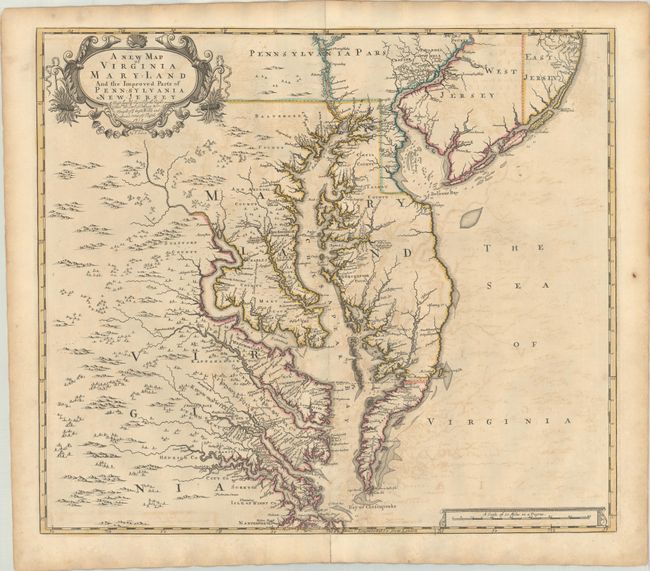Catalog Archive


Auction 184, Lot 199
Map of Chesapeake Bay Based on Landmark Herrman Map
"A New Map of Virginia Mary-land and the Improved Parts of Pennsylvania & New Jersey...", Browne/Senex

Subject: Colonial Mid-Atlantic United States
Period: 1719 (dated)
Publication: New General Atlas
Color: Hand Color
Size:
22 x 19.2 inches
55.9 x 48.8 cm
Download High Resolution Image
(or just click on image to launch the Zoom viewer)
(or just click on image to launch the Zoom viewer)